Visual regression is one of the hardest part in UI testing. And you will likely agree that it is extremely powerful. But how it works? What the problem it is solving under the hood? Why people choose visual regression services and how we build the fastest visual regression tool in the world :)
Visual Regression Under the Hood
FAQ
Visual regression testing is a method used in UI testing to automatically detect changes in the UI by comparing screenshots taken over time. It helps in identifying unintended visual modifications and ensures the UI appears as expected to the users.
Visual regression testing can become flaky due to frequent 'visual noise' or minor, irrelevant changes that occur with each commit, leading testers to start ignoring or auto-approving these changes, thus reducing the effectiveness of the tests.
The process of visual regression testing involves four main steps: loading the page, taking a screenshot, comparing the screenshot with a previously approved version, and identifying any differences. These steps help establish whether changes have occurred in the UI.
Achieving predictability in visual regression testing involves making the testing environment consistent, such as using Docker to run tests, which minimizes environmental differences and visual noise caused by variations in browsers or operating systems.
Visual Regression Tracker is a tool that allows for running visual regression tests inside Docker in a self-hosted service. It provides an interface for approving screenshots and offers a level of predictability similar to that of Visual Regression Services.
Testing UI over resolutions commonly used by the target audience ensures that the interface looks and functions correctly across different devices and screen sizes. This helps in catching resolution-specific issues that might not be visible at other resolutions.
Comparing high-resolution screenshots is computationally intensive as it involves iterating over millions of pixels, calculating differences, and processing the data. This task requires significant computational resources and can be slow, especially in non-native programming environments like JavaScript.
Video Summary and Transcription
Today's Talk discusses the value and challenges of visual regression in UI testing. It highlights the importance of predictability in loading pages and choosing the right screenshot resolution. It also mentions the use of Visual Regression Services, Docker, and the Odiff library as solutions to improve stability and efficiency in visual regression testing.
1. Introduction to Visual Regression
Hello, everybody. Today, I'll talk about visual regression and its value in UI testing. Let's dive into a simple example and see how visual regression can automatically detect changes in UI screenshots, helping us build a stable and reliable system.
Hello, everybody. I'm excited to be here today and to talk about visual regression. My name is Dmitry. I'm from Ukraine. Working full-time at Cypress.io and doing some work at the open-source community.
Let's start. Today, we've been talking a lot about UI testing, but you probably will agree that the hardest part of UI testing is to test how UI looks for users, right? Because computers don't know anything about UI. And that's where visual regression gives us a lot of value.
Let's roll over a simple example of visual regression and then dive into the process. So here is an example. A simple screenshot of the Cypress.io homepage. And here is the next screenshot. You probably spot the difference, right, because they're changing too quickly. But visual regression can do this automatically. You can see that there are two changes in between of these screenshots. And this is extremely helpful when we want to build a stable and reliable system. Yeah, it makes us confident about how our UI changes for real users.
2. Challenges and Solutions in Visual Regression
But in my experience, visual regression is also an extremely flaky test category. Today, I'd like to dive into visual regression and discuss the hidden problems in each step. Loading the page is not enough; it needs to be predictable. Different UI can occur on different operating systems or browsers. Visual Regression Services and Docker can help achieve predictability. Choosing the right screenshot resolution is crucial, as it should match the resolutions used by users. The comparison of screenshots can be slow, but the Odiff library offers a faster solution. In conclusion, ensure consistent environments, avoid unstable content, and test UI over user-used resolutions.
But in my experience, visual regression is also an extremely flaky test category. You probably know this reason when each literally each second screenshot, each second commit, has some visual regression noise and like we're all are humans and we are getting used to this starting ignoring, auto approving and so on and so forth. And this is a problem because once it become flaky, it lost the value.
So today, I'd like to discard this problem by diving into visual regression, the hood and try to get this knowledge and use this to build more reliable visual regression. So under the hood of visual regression always contain four simple steps. Firstly, you need to load a page, then you need to make a screenshot, compare it with previous approved version and see the difference. Looks pretty easy, but each of these steps has its own hidden problems and I'd like to discuss it.
So first of all, you need to load the page, but that's not enough to just load the page using your favorite browser-based test runner like Cypress, right? You need to make this page predictable, and this is a problem especially when you are not using visual regression services, because when your page is not in the stable state you can easily get a lot of noise, like for example, here. Most of the screenshots have sections that are changing from time to time, like the inline videos or changing carousel by timeout, and everything, all of this, can easily broke the visual regression process. Also, animation, times, random values can easily break this, so we need to be careful about this, but that's not everything we should care about.
Also, the different UI is possible even when you are running the same code, but in different operation system or in different browsers. Just because the different layout systems or different, like, operation system itself, can produce layout shifts or different default view, so this will break our code. And this is a real problem, which is perfectly solved by Visual Regression Services, but it gives a lot of problem for people that are trying to make the Visual Regression by themselves. Visual Regression Services solves this by loading your HTML, and not the screenshot, but HTML, running this HTML with all the styles in the specified browser, and only there to make a screenshot and compare it. But you can get the same level of predictability by running all of your tasks, and only run your Visual Regression tasks in Docker. It can be even reasonable to make a specific separate amount of tasks only for Visual Regression and run it only in Docker, even unproof it in Docker. And this will make you confident that your tasks are running in the same environment, and does not give a lot of noise and layout shifts in between local machines of developers. But there's also an interesting middle between these two approaches. There's a project called Visual Regression Tracker that gives you an ability to run these tasks inside the Docker in the self-hosted service, gives you an interface that allows to approve the screenshot, and is giving you the same level of predictability as Visual Regression Services, but self-hosted. I'm sure this project will make future of Visual Regression.
But then you need to make a screenshot, right? But which one? And here is a problem, because I'm constantly seeing, especially in the Cypress community, that people are giving default Cypress resolution, or some small resolution that are honestly not used by nobody in the world, yeah? We need to ensure that we are testing our UI over that resolutions that are used by our users. You can easily get this information from any analytics tool. For example, here is the stats of my personal website, and you can see that most of my users are using this weird resolution of some tablets, and honestly, I'm not testing my website over this resolution, and you probably know how it can be easy to lose some visual effect when this resolution is not widely popular, or too big, for example, and you need to ensure that you are testing over this resolution that's used by your users, and that's actually weird that by default, visual application tools and services are not using the most popular resolutions, like for example, Full HD. And the reason of this that we are doing screenshot testing over small images is that the comparison of screenshots is really slow. In order to compare two images with a Full HD resolution, you need to iterate over 2 million pixels, calculate the difference between each one using a specialized formula, and only then save the difference. It's a pretty hard and not performance-friendly task for computers, especially when you're trying to do this in JavaScript. And that's why I created and I'm right now working on the library called Odiff that allows you to do the image comparison not in JavaScript but in native, more performance language and save you a lot of time and allow you to test the screenshots that you want and make it fast.
So we probably are out of time. So let's discuss a conclusion and a key to painless visual regression. You need to ensure that your tasks are running in the same environment and you need to ensure that you don't have any unstable content on your page even if you're using visual regression services. And you also need to test your UI over that resolution that are used by your users and not just fast or performance-friendly for some service. And that's it. I'm happy to be here.
Check out more articles and videos
We constantly think of articles and videos that might spark Git people interest / skill us up or help building a stellar career
Workshops on related topic
In this three-hour workshop we’ll introduce React Testing Library along with a mental model for how to think about designing your component tests. This mental model will help you see how to test each bit of logic, whether or not to mock dependencies, and will help improve the design of your components. You’ll walk away with the tools, techniques, and principles you need to implement low-cost, high-value component tests.
Table of contents- The different kinds of React application tests, and where component tests fit in- A mental model for thinking about the inputs and outputs of the components you test- Options for selecting DOM elements to verify and interact with them- The value of mocks and why they shouldn’t be avoided- The challenges with asynchrony in RTL tests and how to handle them
Prerequisites- Familiarity with building applications with React- Basic experience writing automated tests with Jest or another unit testing framework- You do not need any experience with React Testing Library- Machine setup: Node LTS, Yarn
Tests rely on many conditions and are considered to be slow and flaky. On the other hand - end-to-end tests can give the greatest confidence that your app is working. And if done right - can become an amazing tool for boosting developer velocity.
Detox is a gray-box end-to-end testing framework for mobile apps. Developed by Wix to solve the problem of slowness and flakiness and used by React Native itself as its E2E testing tool.
Join me on this workshop to learn how to make your mobile end-to-end tests with Detox rock.
Prerequisites- iOS/Android: MacOS Catalina or newer- Android only: Linux- Install before the workshop
1. Welcome to Postman- Explaining the Postman User Interface (UI)2. Workspace and Collections Collaboration- Understanding Workspaces and their role in collaboration- Exploring the concept of Collections for organizing and executing API requests3. Introduction to API Testing- Covering the basics of API testing and its significance4. Variable Management- Managing environment, global, and collection variables- Utilizing scripting snippets for dynamic data5. Building Testing Workflows- Creating effective testing workflows for comprehensive testing- Utilizing the Collection Runner for test execution- Introduction to Postbot for automated testing6. Advanced Testing- Contract Testing for ensuring API contracts- Using Mock Servers for effective testing- Maximizing productivity with Collection/Workspace templates- Integration Testing and Regression Testing strategies7. Automation with Postman- Leveraging the Postman CLI for automation- Scheduled Runs for regular testing- Integrating Postman into CI/CD pipelines8. Performance Testing- Demonstrating performance testing capabilities (showing the desktop client)- Synchronizing tests with VS Code for streamlined development9. Exploring Advanced Features - Working with Multiple Protocols: GraphQL, gRPC, and more
Join us for this workshop to unlock the full potential of Postman for API testing, streamline your testing processes, and enhance the quality and reliability of your software. Whether you're a beginner or an experienced tester, this workshop will equip you with the skills needed to excel in API testing with Postman.
We will cover writing tests, covering every application feature, structuring tests, intercepting network requests, and setting up the backend data.
Anyone who knows JavaScript programming language and has NPM installed would be able to follow along.














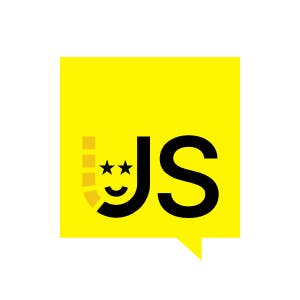




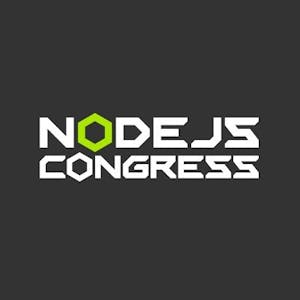
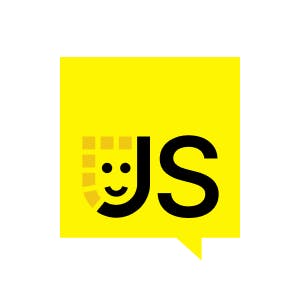

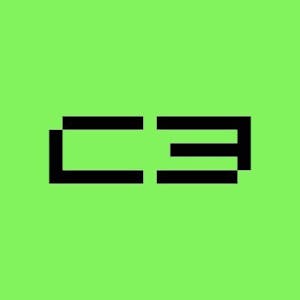

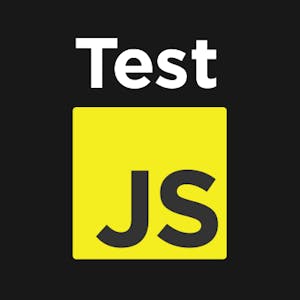
Comments